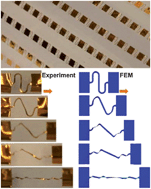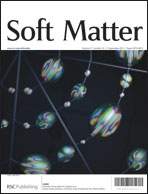Buckling in serpentine microstructures and applications in elastomer-supported ultra-stretchable electronics with high areal coverage†
Abstract
Lithographically defined electrical interconnects with thin, filamentary serpentine layouts have been widely explored for use in stretchable electronics supported by elastomeric substrates. We present a systematic and thorough study of buckling physics in such stretchable serpentine microstructures, and a strategic design of the serpentine layout for an ultra-stretchable electrode, via analytical models, finite element method (


 Please wait while we load your content...
Please wait while we load your content...